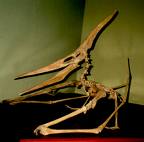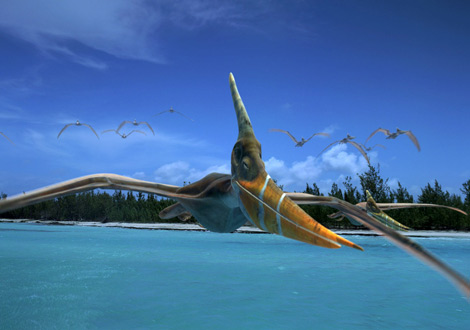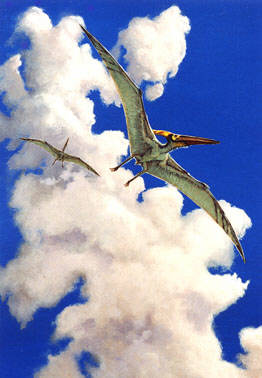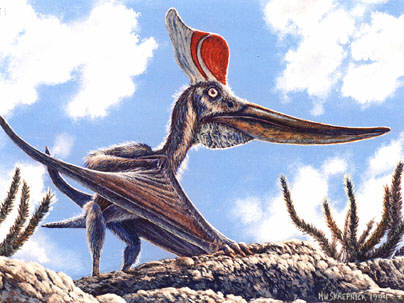Pteranodon
Homepage > Prehistoric Flying Reptiles - Pteranodon
 The
first remains of Pteranodon were found i the 1870s, and for the next 100
years it was the largest pterosaur known. It lived during the Late Cretaceous
Period, about 89-91 million years ago, fossils have been found in Asia,
Europe, and North America. Its wingspan dwarfed that of most other pterosaurs
with a length of 30 feet (9 meters), but its most remarkable feature was
its huge and bizarrely-shaped head, which had an extraordinary bony crest.
The
first remains of Pteranodon were found i the 1870s, and for the next 100
years it was the largest pterosaur known. It lived during the Late Cretaceous
Period, about 89-91 million years ago, fossils have been found in Asia,
Europe, and North America. Its wingspan dwarfed that of most other pterosaurs
with a length of 30 feet (9 meters), but its most remarkable feature was
its huge and bizarrely-shaped head, which had an extraordinary bony crest.
In one species, pteradnodon sternbergi, the crest sticks up almost at right angles to the beak, but in Pteranodon logiceps it sweeps backward so that the beak and crest are almost in line. This kind of crest would have counterbalanced the beak, but it also acted like an airplane's tail fin, keeping the beak pointing into the oncoming air.
The stabilizing effect may have been an advantage, but many other pterosaurs such as Quetzalcoatlus managed to fly perfectly well without a crest. Pteranodon probably caught fish by skimming close to the waves. Like some of today's fishing seabirds, it is unlikely to have landed on the water because, with its immense wingspan, it would have found it difficult to take off again.

Pteranodon Paleo Galery
Click on images to see more art from artis!

